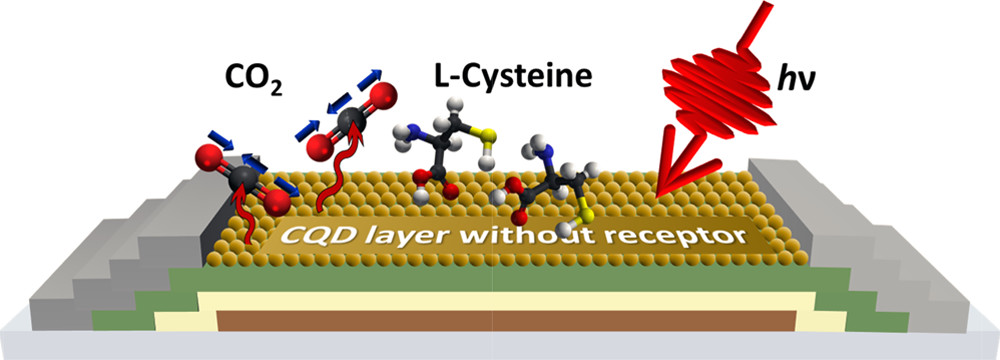
Dongsun Choi(제1저자, 통합과정)
Self-doping in nanocrystals allows accessing higher quantum states. The electrons occupying the lowest energy state of the conduction band form a metastable state that is very sensitive to the electrostatic potential of the surface. Here, we demonstrate that the high charge sensitivity of the self-doped HgSe colloidal quantum dot solid can be used for sensing three different targets with different phases through self-doped HgSe nanocrystal/ZnO thin-film transistors: the environmental gases (CO2 gas, NO gas, and H2S gas); mid-IR photon; and biothiol (l-cysteine) molecules. The self-doped quantum dot solid detects the targets through different mechanisms. The physisorption of the CO2 gas and the NO gas molecules, and the mid-IR photodetection show reversible processes, whereas the chemisorption of l-cysteine biothiol and H2S gas molecules shows irreversible processes. Considering the quenching of mid-IR intraband photoluminescence of the HgSe colloidal quantum dot solid by the vibrational mode of the CO2 gas molecule, sensing the CO2 gas could be involved in the electronic-to-vibrational energy transfer. The target molecules are quantitatively analyzed, and the limits of detection for CO2 and l-cysteine are 250 ppm and 10 nM, respectively, which are comparable to the performance of commercial detectors.

https://pubs.acs.org/doi/abs/10.1021/acsami.8b16083



















